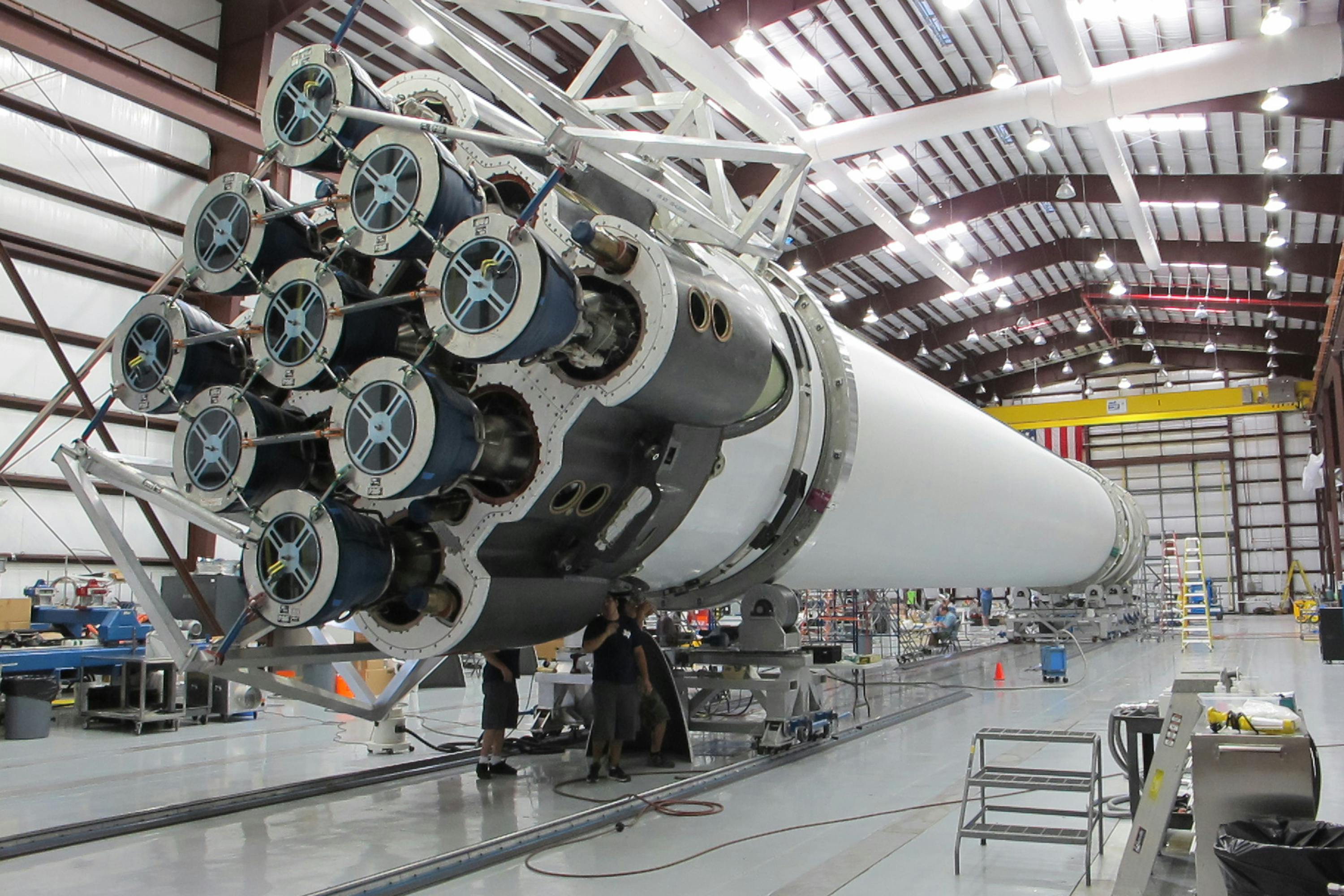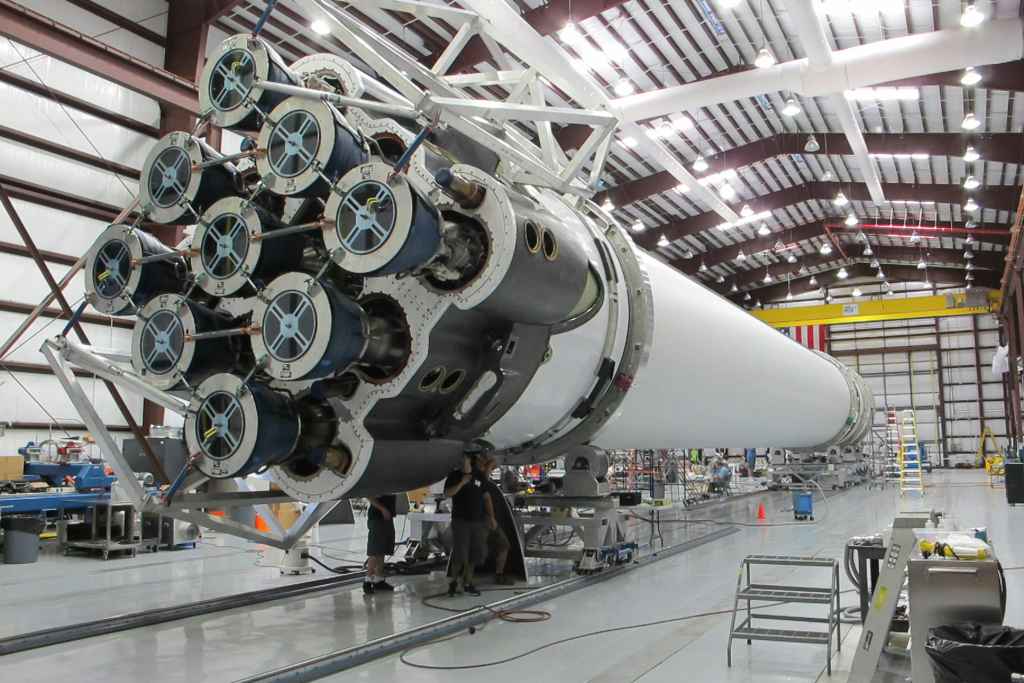
The Validation Process: Rigorous Testing Regimens Paving the Way for Flight
Engineering genius is meaningless without irrefutable validation. The USU team hasn’t just built a motor; they have built what is set to become the most exhaustively documented small-scale hybrid motor in history. This validation is being done through a partnership that lends immense credibility to the entire project.
The Collaborative Testing Environment at NASA Facilities
To validate the motor’s readiness for its critical mission profile, extensive testing has been conducted in collaboration with NASA experts. A significant portion of this high-stakes validation work has taken place at NASA’s Marshall Space Flight Center in Huntsville, Alabama. This external verification is crucial for confirming that the propulsion unit performs as expected under conditions simulating space operations, including testing in both ambient and vacuum environments. The successful completion of a rigorous test campaign across three distinct testing venues under varying conditions is a testament to the system’s robustness.
It is not enough to test in a controlled, sea-level environment. Space missions demand performance in a vacuum. By taking the technology to a facility like Marshall, researchers can subject the motor to the near-zero atmospheric pressure it will face in space, checking for anomalies in combustion stability and performance that only a vacuum environment can reveal. This multi-venue campaign—on-campus, and then at a primary NASA testing site—is the gold standard for achieving flight readiness.
Characterization Milestones and Thrust Achievements
The specific component under intense scrutiny is often cited as a seventy-five millimeter thrust chamber, which is poised to become the most thoroughly tested and well-characterized hybrid motor in the historical record upon the conclusion of the ongoing program. Previous on-campus tests at USU have targeted achieving thrust levels around two hundred and fifty pounds, a significant output for the scale of the system being developed, especially considering the Moon’s lower gravity. Researchers like Ph.D. student Ryan Thibaudeau have been instrumental in documenting the motor’s performance through these repeated firing sequences, often exceeding thirty successful ignitions in test campaigns.
Let’s put that 250-pound figure in perspective. The Moon’s gravity is about 1/6th that of Earth. A 250-pound thrust motor acting on the Moon provides the equivalent force to lift 1,500 pounds on Earth. For a single, small-scale landing module engine, that is substantial, demonstrating that this “green” system is not a performance compromise; it’s a genuine high-performer. The sheer volume of test data—the “characterization”—is what builds confidence for human rating. Every burn is a data point, meticulously collected to ensure the next firing, years from now on the lunar surface, behaves exactly as predicted.
Advancements in Control Valve Technology: The Secret to Speed and Simplicity. Find out more about USU NASA hybrid rocket motor development.
All the clean chemistry and 3D-printed fuel grain in the world won’t help if the oxidizer valve is too slow to react. The true magic behind the hybrid’s throttle-ability lies in a brilliant piece of supporting hardware that works in concert with the engine.
Integrating Digital Valve Systems for Rapid Response
The capability for rapid throttle response, which is a hallmark of this hybrid technology, has been significantly enhanced by the integration of fast-acting digital valve technology. Previous iterations of control valves presented limitations in how quickly the thrust could be adjusted. In collaboration with NASA’s Marshall Space Flight Center, the USU-developed motor concept has been paired with a novel digital valve design. This engineering marriage has demonstrably halved the time required for a full-scale throttle maneuver, reducing the transition time from maximum to minimum thrust from two seconds down to one second, with projections for achieving even faster response times approaching half a second.
This is where the engineering gets really granular. Instead of one large, slow valve, the digital system uses a cascade of smaller, commercially available solenoid valves—essentially creating an 8-bit control system for the oxidizer flow. This is powerful because the response time of a rocket engine is often dictated by the control hardware. Cutting the throttle time in half is a profound gain for guidance, navigation, and control (GN&C) systems. It allows the computer controlling the lander to make micro-adjustments almost instantaneously, providing an agility that legacy systems simply could not match. It moves the hybrid system from a simple, throttle-capable engine to a high-fidelity, precise control surface.
Simplification of Propulsion Systems and Cost Reduction
The advanced capabilities enabled by this hybrid motor extend to systemic simplification within spacecraft design. By incorporating the capabilities of both primary main propulsion and finer reaction control systems (RCS) into a single, throttleable unit, the overall propulsion system of a lander or orbital vehicle can become significantly cheaper and less complex. Fewer separate engines and associated plumbing translate directly into reduced mass, lower manufacturing complexity, and decreased operational overhead, offering compelling economic benefits for future space missions by avoiding the need for costly, multi-stage, or chemically distinct propulsion stacks.
This concept of simplification of propulsion systems is a major economic driver. Every kilogram of dry mass you save on the lander is a kilogram less that needs to be launched from Earth, which translates to millions of dollars saved over the course of a program. If this single engine can perform the major braking burn (high thrust) and then the fine-tuning adjustments needed for touchdown or orbital insertion (low thrust/pulsing), you eliminate the need for a separate, potentially hypergolic, RCS system entirely. It’s a move toward mass efficiency that makes sustainable lunar bases, and eventually Mars missions, economically viable.
Project Leadership and Student Integration: Building Talent Alongside Technology. Find out more about USU NASA hybrid rocket motor development guide.
This project’s success is as much about the people involved as the hardware itself. It is a unique structure that brings world-class experience directly to the next wave of aerospace talent.
The Visionary Guidance of Dr. Stephen Whitmore
The entire endeavor is directed by Dr. Stephen Whitmore, a retired NASA engineer whose expertise bridges the gap between government agency requirements and academic research capabilities. His leadership at USU’s Propulsion Research Laboratory harnesses decades of spaceflight experience to guide the next generation of engineers. Dr. Whitmore’s team structure is deliberately interdisciplinary, designed to foster deep understanding and comprehensive development of complex aerospace hardware, ensuring that the theoretical design translates effectively into reliable hardware ready for flight certification.
Dr. Whitmore’s career trajectory—from being at NASA back in the 1970s to now leading this cutting-edge university lab—provides a crucial link to real-world mission demands. He doesn’t just teach rocket theory; he guides the application of decades of institutional knowledge toward solving today’s most pressing problems, like the need for safer rocket propulsion. This oversight ensures that the project remains tightly aligned with NASA’s current Artemis program objectives.
Cultivating the Next Generation of Aerospace Engineers
This research platform serves as an unparalleled educational opportunity for students across various academic levels at the university. The team mentioned in reports includes graduate students like Ryan Thibaudeau, Josh Sorenson, and Jared Coen, working in tandem with undergraduate contributors such as Jaron Dowdy. These students are not merely observing; they are actively involved in the design, manufacturing oversight, and execution of critical tests. This hands-on immersion in a high-profile NASA project provides them with invaluable, real-world experience in propulsion system development, ensuring a pipeline of highly qualified talent ready to support future aerospace endeavors.
This is actionable mentorship in its purest form. Students are not writing code for a theoretical simulation; they are monitoring temperatures, logging thrust data, and managing test sequences for hardware destined for space. When Ryan Thibaudeau discusses the dangers of lunar dust contamination, he is speaking from a position of deep, current technical understanding, not just textbook knowledge. This direct involvement ensures that the talent pool entering the aerospace industry is exceptionally well-prepared for the next wave of complex missions.
Broader Implications Beyond Lunar Descent: Safety and Science Synergy. Find out more about Throttling and restart hybrid rocket engine tips.
While the initial push is clearly focused on getting astronauts safely onto the lunar surface for the Artemis missions, the technology’s impact is far wider, touching on foundational planetary science and future orbital mechanics.
Contribution to the Plume Surface Interaction Study
The hybrid system’s testing is not solely confined to propulsion performance; it is an integral part of NASA’s broader Plume Surface Interaction (PSI) project. This complementary research focus addresses the critical issue of understanding and mitigating the effects of rocket exhaust plumes on planetary landing environments. Fine lunar dust, once disturbed by descent engines, can become electrically charged, contaminating sensitive spacecraft electronics, adhering to astronaut suits, and potentially being carried back into habitats—a significant safety concern. By precisely characterizing the exhaust plume generated by this controlled hybrid motor, researchers can advance the modeling necessary to predict and minimize this regolith disruption, contributing to safer astronaut operations.
This is an example of holistic engineering. It recognizes that a rocket engine doesn’t just push a spacecraft down; it blasts the ground with high-energy plasma. On the Moon, where the dust is extremely fine and electrostatically charged, this plume can be destructive. Because the USU hybrid motor is so precisely controllable—meaning its exhaust characteristics are repeatable—it serves as an ideal scientific tool for the PSI project. It allows researchers to dial in a specific exhaust signature and precisely measure the resulting dust lofting, which is essential for designing landing pads and dust mitigation strategies for future bases. It’s engineering in service of pure science.
Potential for Diverse Terrestrial and Orbital Applications
While the current focus is lunar landing, the inherent advantages of this fast-acting, deep-throttling hybrid motor technology suggest utility across a much wider spectrum of aerospace needs. Its simpler architecture compared to complex liquid engines, combined with its superior safety profile over traditional solid rockets, makes it a candidate for numerous roles. These potential applications extend to improving motors for commercial or government low Earth orbit spacecraft, next-generation sounding rockets, and even defense-related systems like missiles, where rapid control and simplified logistics are highly valued attributes for future vehicle designs.
Consider the orbital insertion burn. If a small satellite needs to move from a low parking orbit to a higher operational orbit, an engine that can be precisely throttled to maintain the required acceleration profile—and then restart for course correction months later—is far superior to a simple ‘on/off’ solid motor. This technology offers a pathway to cheaper, more reliable insertion stages for small satellite constellations, driving down the overall cost of access to space. We are looking at a platform that could serve everything from orbital tugs to high-altitude research vehicles.
Historical Context and Forward Trajectory: A Generational Leap. Find out more about Additive manufacturing solid fuel grain strategies.
To truly appreciate the magnitude of this work, one must step back and view it against the backdrop of aerospace history. The technological steps being taken now are not minor improvements; they are fundamental shifts in philosophy.
Contrasting the New System with Apollo-Era Technology
The narrative of this Utah State University research is best understood when contrasted with the propulsion methods of the past. The rockets that powered the original moonwalkers relied on propulsion systems that offered minimal, if any, active control over the burn once ignited. The current hybrid motor represents a generational leap forward, trading the inherent risks of hypergolic or monolithic solid fuels for a system that is controllable, safe to store for long durations, and precisely governable throughout its operational life. This shift allows for landing profiles that are far more forgiving and adaptable to unforeseen surface conditions, a lesson learned from decades of spaceflight experience.
In the Apollo missions, the descent profile was largely pre-programmed and executed with very limited in-flight adjustments possible on the main engine. The philosophy was: build it robustly, launch it precisely, and pray. Today’s philosophy, enabled by this hardware, is: build it smart, launch it safely, and actively control the landing. This new paradigm dramatically reduces the risk margin for error, which is non-negotiable when human lives are at stake. The older systems were brute force; this is precision engineering.
The Long-Term Research Horizon and Characterization Goals
The development is not seen as a finite project but as the establishment of a foundational technology base. The successful completion of the current test program—characterizing the seventy-five millimeter thrust chamber under both sea-level and vacuum conditions—is viewed as the creation of an invaluable, highly detailed dataset. This comprehensive historical performance record for a hybrid motor operating in varied environments will serve as the benchmark for all subsequent designs, not just within NASA but across the wider aerospace community, ensuring that the knowledge gained at USU propels propulsion technology decades into the future.
The real deliverable here, beyond the physical motor, is the data—the modeling parameters, the regression rates, the digital valve response curves under vacuum. This comprehensive record establishes the physics models for this class of engine, allowing future engineers to design missions with confidence. It shifts the design process from one relying on expensive, proprietary testing to one built upon validated, open-source (within the context of the project) performance data. That knowledge inheritance is the long-term dividend of this decade-long effort.
The Significance of the “Green” Propulsion Designation: Performance Without Penalty. Find out more about USU NASA hybrid rocket motor development overview.
The motivation to move away from toxic chemicals is intertwined with the technical challenge of maintaining—or even exceeding—the performance benchmarks set by those older systems. The goal is “Green” performance parity.
Environmental Sustainability as an Engineering Driver
The term “High-Performance ‘Green’ Hybrid Propulsion system” underscores the environmental consideration embedded in the design philosophy. This system has been under continuous development at USU for over a decade, with its genesis rooted in the search for an environmentally sound substitute for highly polluting or toxic chemical propellants. While its immediate application is in deep space, the long-term goal includes developing propulsion technology that minimizes the ecological footprint both during terrestrial testing and within the vacuum of space, aligning with modern mandates for responsible technological advancement.
This commitment to environmental stewardship is becoming a non-negotiable requirement in modern defense and space contracting. Developing propulsion that minimizes hazardous waste on the ground during manufacturing and testing, and which does not leave toxic residues on planetary surfaces, is a marker of advanced technological maturity. The fact that this motor achieves this while simultaneously enhancing mission performance is a testament to the team’s engineering ingenuity.
Performance Parity with Environmental Advantage
A crucial outcome of the decade-long development is that the “green” system achieves a performance level that is significantly higher than what might be expected from such a benign propellant combination. The researchers have successfully engineered a motor that rivals the operational safety of basic cold-gas systems—which offer zero chemical risk—while delivering thrust performance metrics closer to much more powerful, yet dangerous, chemical rockets. This dual achievement—high performance combined with high safety and environmental responsibility—is what makes the USU technology a particularly compelling solution for NASA’s human-rated missions.
For instance, mixtures using $\text{N}_2\text{O}$ and hydrocarbons have been shown to achieve a higher specific impulse ($\text{I}_{\text{sp}}$) than pure hydrazine, the legacy monopropellant. This means for the same amount of propellant mass, the green engine can generate more total impulse—more push—which is a direct performance win. It’s the rare case in engineering where the sustainable choice is also the superior performance choice for the application, moving past the old trade-off curves.
Impact on Future Space Operations and Safety Protocols: Beyond the Hardware. Find out more about Throttling and restart hybrid rocket engine definition guide.
The influence of this technology extends beyond the firing stand and into the protocols that govern astronaut health and mission architecture.
Enhancing Crew Safety Through Reduced Contaminant Risk
The focus on safer propellants directly translates into enhanced crew safety, a factor that receives paramount attention in human spaceflight planning. As noted by graduate student Ryan Thibaudeau, the potential for kicking up lunar dust (regolith) is a major issue, as charged particles can adhere to sensitive equipment and astronaut suits, creating contamination hazards that can be tracked back into the crew cabin. By enabling a smoother, more precisely controlled descent, the hybrid motor inherently reduces the sheer volume and velocity of ejected particulate matter, providing an added layer of protection for both the vehicle’s electronics and the astronauts themselves, representing a holistic approach to mission assurance.
The ability to execute a gentle, controlled braking profile means the lander doesn’t plow into the surface, kicking up a massive, electrically charged dust cloud. Instead, a slower, carefully managed thrust profile minimizes this hazardous interaction. This is a direct, proactive safety feature integrated into the engine’s fundamental operating characteristic—throttle control. It’s a prime example of how improving the engine’s technical function (throttling) directly improves the crew safety profile for lunar surface operations.
Enabling Novel and More Economical Flight Profiles
The advanced throttling and restart capabilities inherent to this motor design open the door to flight profiles that were previously impractical or prohibitively expensive. Spacecraft utilizing these motors could potentially combine propulsion functions that would otherwise require separate, dedicated systems. This modular efficiency—a single unit capable of both major orbital maneuvers and fine attitude adjustments—streamlines the overall design, offering significant weight and cost savings. This economic feasibility is critical as NASA and commercial partners look to make regular, sustainable access to the Moon and, eventually, Mars, a reality, by driving down the per-kilogram cost to reach a destination.
Actionable takeaways for future mission designers are clear:
The path to a sustainable presence off-world runs directly through advancements in propulsion efficiency and safety, making this research fundamental to the next fifty years of exploration.
Conclusion: Firing the Future with Predictable Power
The work happening at Utah State University’s Propulsion Research Laboratory, guided by the seasoned vision of Dr. Stephen Whitmore and executed by a dedicated team of students, represents more than just an incremental step in rocket science. It is a foundational shift toward safer, highly capable, and environmentally conscious space access. By mastering the synergy of solid fuel and liquid oxidizer, by leveraging additive manufacturing for perfect fuel grains, and by deploying lightning-fast digital valve technology, this hybrid motor delivers the trifecta: superior control, extreme safety, and high performance.
The journey from the controlled chaos of legacy propellants to the predictable power of this $\text{N}_2\text{O}$-based hybrid is the story of modern aerospace engineering. The data being generated from the 75mm thrust chamber tests are establishing new industry benchmarks, directly supporting NASA’s current lunar objectives and seeding the knowledge base for Mars missions to come. This technology is not just being developed for the future of space exploration; it is actively building it, one precisely controlled, non-toxic burn at a time.
What part of this hybrid engine breakthrough—the safety, the throttling, or the 3D printing—do you believe will have the biggest impact on establishing a permanent lunar presence? Share your thoughts in the comments below, and be sure to keep an eye on the continuing test results as this technology moves closer to its flight certification!









